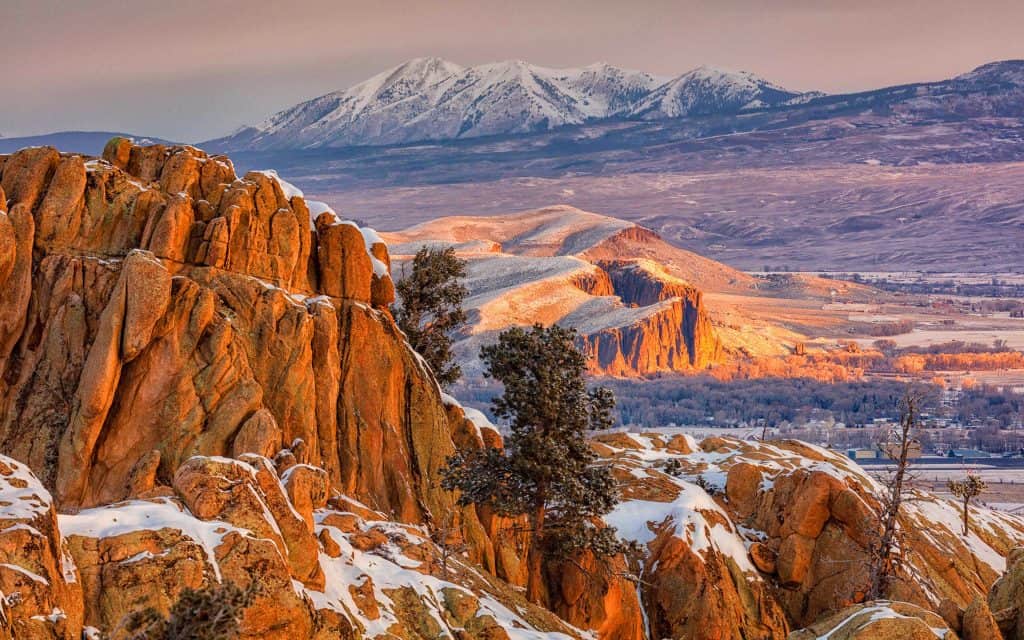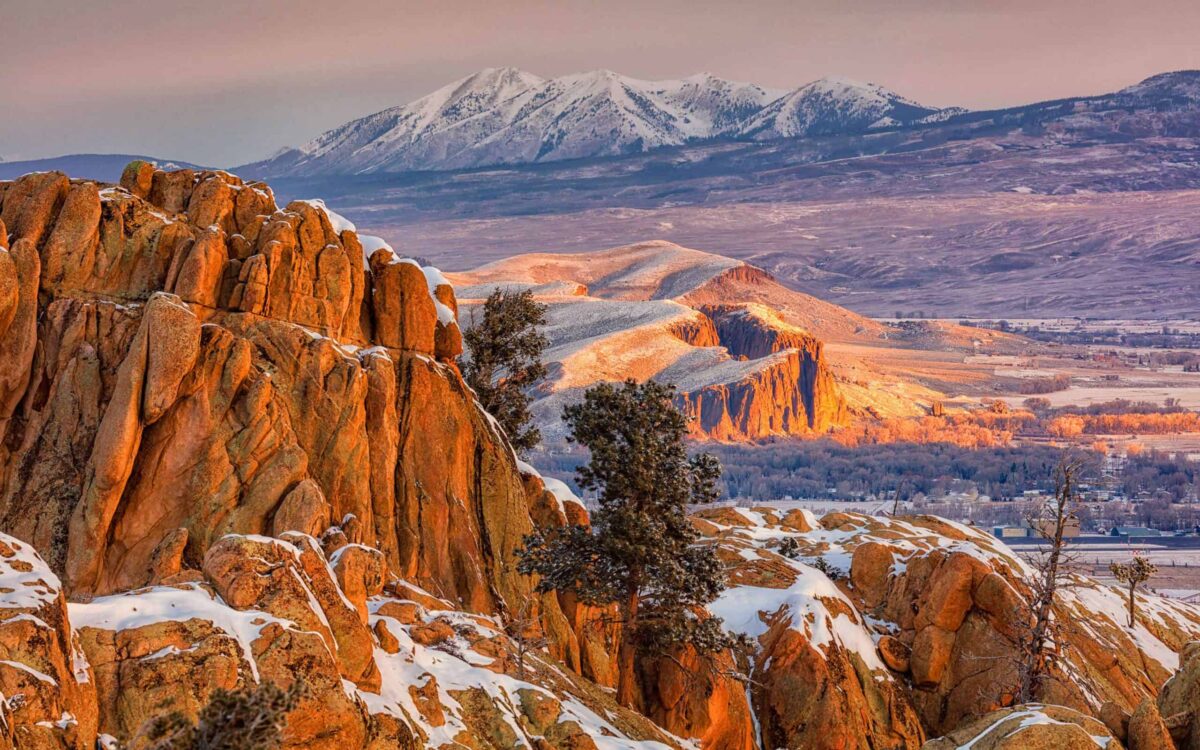
As universities compete for tuition dollars and prospective students seek bachelor’s, master’s, and certificates in a credential’s arms race, the rise of online collegiate education options only makes sense. Students can complete degrees from their beds, their couches, or maybe even their camper van parked strategically outside a local library.
With the pandemic and the rise of Zoom for all students, physically located within proximity to their respective universities or not, it makes little difference—this trend towards online schooling likely is not going anywhere. And for universities, the deal can be rather sweet.
While undergraduates continue to live on or near campus and attend classes in-person, Western’s stock of graduate programs—nine at last count with more than 450 individual students—are making full use of technology to offer a variety of distance options.
Students shell out full tuition, more than $30,000 over roughly 20 months for graduate students—and rarely, if ever, use services like the library, the gym and fieldhouse (which do require an additional $50 fee for graduate students), the University Center, and other spaces on campus where increased student enrollment could pose limitations to space or resources, and possibly require upgrades or expansions.
Most students will interact predominantly with their direct professors and administrators, and place little demand on adjacent faculty or staff, as in-person students may tend to during their academic exploration, and with the ability to simply ambulate around campus.
Instead, virtual students will attend the online lectures, converse with fellow students in Zoom breakout rooms, or perhaps in written form on Canvas, and dutifully tick off assigned papers and discussion quotas online as they trace the steps towards their respective degrees.
I am not going to argue that no one should partake in online education. It can be a win-win for those seeking a particular degree not offered in their area, and at a particular price point (Western’s Master’s of Environmental Management degree is far cheaper than the three programs it was modeled after: Duke, UC Santa Barbara, and Yale, unsurprisingly).
But I would offer that students, whenever possible—and taking into account specific health considerations surrounding the pandemic)—should move on or near campus to maximize the results of their chosen educational pursuit.
Ever had the experience of leaving a Zoom lecture or workshop and thinking: “what the hell did I just watch? Did I retain anything?” Same here. Online learning is certainly possible, but it can present barriers to learning, particularly for students with attention disorders, chaotic home environments, and other personal situations which render the in-person classroom preferable.
And absolutely, there are specific students who can derive equal benefit from online learning platforms and come out ahead when considering factors like flexibility. But on balance, are students getting what they pay for with their online degrees?
Certain fields of study like ecology and environmental science almost demand that students take the plunge and move to Gunnison. Where better to study the environment than within a county with more than 80 percent public lands, and at a school situated less than an hour’s drive from six wilderness areas, the largest body of water in Colorado (for now, at least), and along the banks of the second largest tributary to the Colorado River.
Gunnison offers ample opportunities to study elk, bear, deer, mountain lions, coyotes, the Gunnison sage grouse, various species of trout, and many more wildlife species. Our high sagebrush-steppe ecosystem, ranching heritage, tourism and recreation economy make Gunnison a picture–perfect place to examine both environmental conflict and collaboration.
Yet Western is actively pursuing expanded online education in most of its graduate degrees—-roughly a third of the MEM program is online, along with the lion share of the Creative Writing program, the Gallery and Museum Management program, a large portion of the Education and Special programs, and much of the Outdoor Industry MBA cohort.
It’s not hard to see why students like these programs—it provides them flexibility on their way to a degree, which, hopefully, will allow them to compete for desirable jobs and pull-down higher wages. Plus, they don’t have to relocate to Gunnison, which is increasingly difficult as the housing market continues to worsen.
Yet they will miss out on large portions of what makes a university education worthwhile—the informal networking before and after classes with professors and fellow students, the lively classroom discussions, and the field experiences—particularly in the Environmental Management and Ecology programs, which expand student’s understanding of course material.
They will also miss out on opportunities to mentor undergraduates on campus, take paid and unpaid student positions which tie them closer to their faculty and university, and explore a new place as they apply their discipline — whether its writing, science, or business — that could grant them new ideas.
Tying education to place is not just a high-minded ideal, it’s a strategy for building deep connections. Online education—at least in my experience, is impersonal and transactional. I know this because I have done it—either by design during my tumultuous undergraduate career or as a result of the global pandemic, which put hordes of students online for valid safety concerns.
We all know the drill: Everyone logs on at 5:59 p.m. for a 6:00 p.m. course, we listen to a lecture, share our PowerPoint screens and read out presentations off a Google Doc, go into our too short or too long breakout rooms (it’s very hard for professors to gauge the virtual room, timing wise), then class ends, and everyone promptly logs off.
And that’s if you even meet at all—some programs are largely held asynchronously. You may meet with a group of students on a project, but there is no centralizing lecture or field trip. Your selected course exists on Canvas, predominantly.
The possibilities and opportunities afforded by a university education, and the benefits it offers—access to a gym, an abundance of quiet study areas, and library of free books, magazines, and archives, to name a few, are plenty—and remote students are missing out almost entirely.
There are options for students who want to expand their education at a fraction of the cost of a more formalized, credentialed university education. Massive open online courses (MOOCS) are offered by platforms like EdX and Coursera from renowned universities around the world—Stanford, Harvard, Princeton, Oxford, and hundreds more among them.
For a price ranging from $49 to monthly subscription models running into the hundreds annually, students can access courses in everything from Sustainable Development Goals (SDGs) to animal welfare, criminology, the legal system, art, and nearly every other subject imaginable.
Of course, the value of the certificates students can obtain is not on the level of an accredited four-year institution, but that may change with time. While MOOCs have clearly encroached into the space occupied historically by universities, I would argue that universities should not go chasing after MOOCs into the online realm—it would almost certainly be a losing battle.
While Western’s bachelor’s degrees remain largely in person, other schools are shifting to online baccalaureate models, which will likely create pressure to follow suit.
Instead of chasing that trend, Western should lean into educational models that maximize the opportunities of in-person, place-based learning. This includes field trips and associated discussions, longer field experiences, stakeholder roleplays, and other learning modes which simply cannot be adequately replicated via Zoom, email, or Canvas.
This means using our beautiful natural settings and community resources as a learning laboratory. Art students painting out at Coldharbour, environmental management students discussing wilderness on a hike in the Fossil Ridge, biology students getting their waders wet in the Gunnison River, theater students performing with community members at the Quigley Bandshell, and OIMBA students building connections with SheFly and PACT Outdoors at the ICELab.
The list of place-based opportunities is endless. This is what experiential learning is supposed to look like, and no lecture—in person or virtual—will ever hold a candle to those experiences.
Virtual learning is an attractive prospect, but it can’t hold a candle to the physically rooted experiences on offer within the Gunnison Valley to explore, stoke passions, and make academic inquiries.
As the university leans into a future that appears to place a greater weight on graduate programs, it should keep these thoughts in mind.

